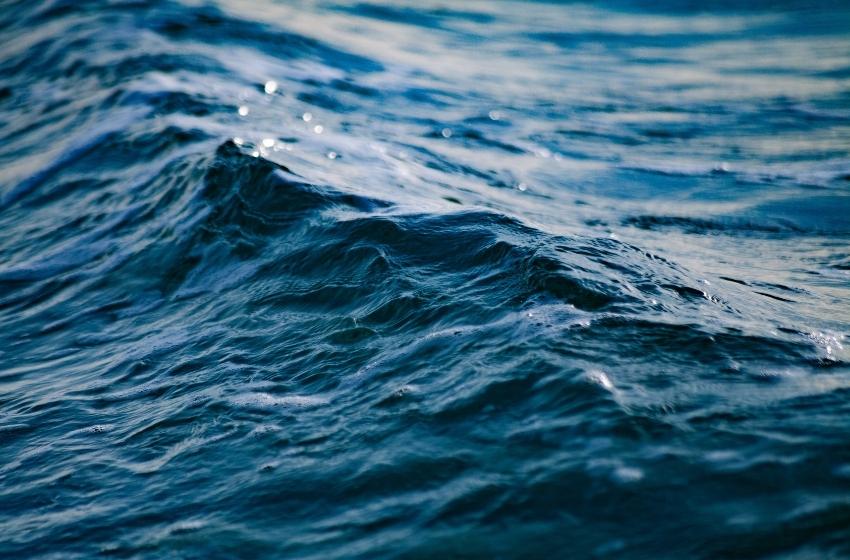It is sometimes said that the Black Sea is one of the youngest seas on our planet. Only an estimated 5,000-7,000 years separates us from the era when the Bosphorus Strait opened, allowing the Black Sea to merge with the Mediterranean and acquire its current coastline. But if we analyse the structure of its flora and fauna, it will become obvious that the Black Sea is much older, as it is inhabited by numerous ancient species, many of which cannot be found anywhere else. Geologists agree with biologists on the following: while the maximum depth of the Black Sea is 2212 m, the thickness of soft sediment deposits up to basaltic rocks is 16 km. It would take over one million years for such thick sedimentations to be formed. How can these seemingly contradictory facts be reconciled?
For a very long time, from 250 to 40 million years ago (i.e., from the Jurassic period of the Mesozoic era to the Neogene), the Atlantic and the Pacific Oceans were connected by the Tethys Ocean, a part of which was comprised of the modern Black Sea. As the result of the continents' movement and the formation of mountain systems at the time of the Alpine orogeny, the Tethys Ocean was divided into several sea basins which intermittently joined and separated from the Atlantic Ocean. Prior to acquiring its modern form, the Black Sea was a highly desalinated water body four separate times, and was a part of salinated seawaters three separate times. The second-to-last time the future Black Sea was connected to the Atlantic Ocean through the Mediterranean Sea was during the Riss-Würm Interglacial, 150,000-100,000 years ago, when the Strait of the Dardanelles appeared. Subsequently, there was another freshwater period: the Neoeuxinian lake-sea; 5,000-7,000 years ago this lake-sea connected to the Mediterranean Sea through the Bosphorus Strait, probably as the result of an earthquake. The isthmus between the Bosphorus’ banks functioned as a natural dam, because the water level in the Neoeuxinian Sea was lower than that of the Mediterranean Sea. After the breakage of that natural dam, giant waves gushed into the Black Sea, whose coast was densely populated at the time. Some historians believe that the failure of the Bosphorus natural dam and rapid rise of the Black Sea waters served as the prototype for the Genesis flood narrative described in the Bible.
As a result of its complicated geological history, Black Sea inhabitants are divided into several groups of different origin:
• Boreal-Atlantic or Celtic relics: <1% - cold-water species e.g. red alga phyllophora, sprat, whiting, the European flounder, Black Sea salmon, harbour porpoise, calanus etc.; all of them got into the future Black Sea (at that time – the Karangatian sea) during the Riss-Würm Interglacial period.
• Ponto-Caspian relics: approximately 9.6% of species are endemic to the Black, Azov and Caspian Seas, and originated at the time of maximal desalination of the Sarmat and Pontian lake-seas; along with a number of mollusks (zebra mussel), polychaetes (hypania) and crustaceans (pontogammarus) preserved in the majority of the Black Sea estuaries. This group also includes sturgeons, round goby, and their relatives. After the breakage of the Bosphorus dam, these relics retreated to the deltas, estuaries, and freshwater parts of the sea;
• Freshwater species withstanding the Black Sea’s 3% salinity: about 10% of the total species composition – these are blue-green and some green algae (cladophora, ulothrix), almost all species of rotifers, oligochaetes, leeches etc.; the fish belonging to this group are perch and pike that often go far into the sea from the Danube and the Dnieper-Bug estuary.
• Species of Mediterranean origin: about 80% of flora and fauna, most of which penetrated after the last connection of the Black Sea to the Mediterranean; brown algae (Cystoseira barbata), mussels, oysters, all species of crabs, seahorse, mullets, horse mackerel, garfish, anchovy, the Black Sea turbot, dogfish, rays: common stingray and thornback ray, common and bottlenose dolphins and many others.
Ergo, the Black Sea is not in actuality our youngest sea; it is an ancient sea which traces its history back to the Mesozoic era and to the great Tethys Ocean that vanished.
This publication was prepared with the financial support of the EU – UNDP project ‘Improving Environmental Monitoring in the Black Sea: Selected measures’ (EMBLAS-Plus). This publication was produced with the financial support of the European Union and UNDP. Its contents are the sole responsibility of the authors and do not necessarily reflect the views of the European Union or UNDP.
Authors: B. Aleksandrov, O. Adrianova, N. Atamas, V. Bolshakov, O. Bondarenko, I. Chernichko, V. Demchenko, S. Dyatlov, Y. Dykhanov, E. Dykyi, O. Garkusha, P. Gol’din, S. Hutornoy, V. Komorin, Y. Kvach, V. Mamaev, O. Manturova, O. Marushevska, A. Mikelyan, Yu. Mikhalev, G. Minicheva, I. Sinegub, T. Shiganova, J. Slobodnik, A. Snigiryova, M. Son, K. Vishnyakova, A. Zotov. Illustrator: I. Pustovar.






















